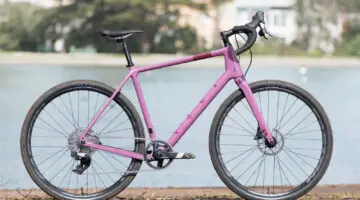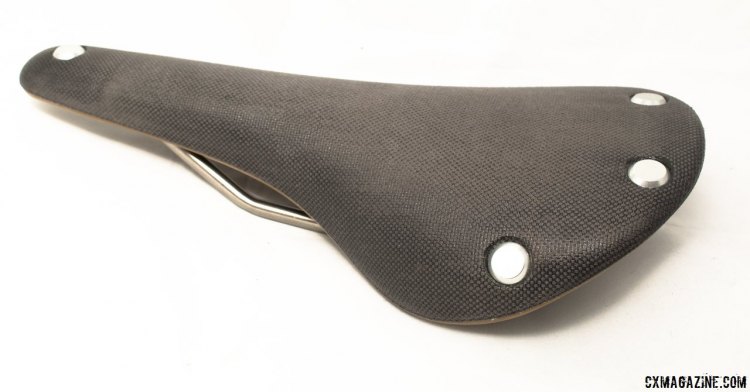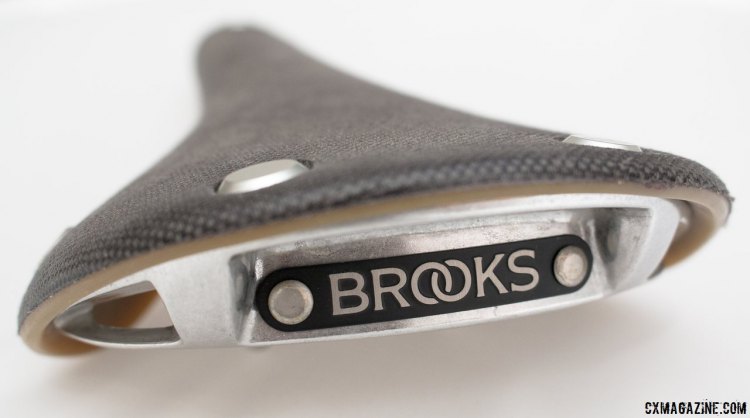Brooks is a name rooted in cycling tradition, although seeing one of its leather saddles at a cyclocross race isn’t the most common occurrence, especially on the course during the elite races. When we caught up with Brand Director Andrea Meneghelli at Interbike, he described the Cambium as a saddle designed with endurance in mind: more for adventure racing than the 30-60 minute high intensity of cyclocross.
We got a hold of a Cambium for a long-term test, so stay tuned for the results.
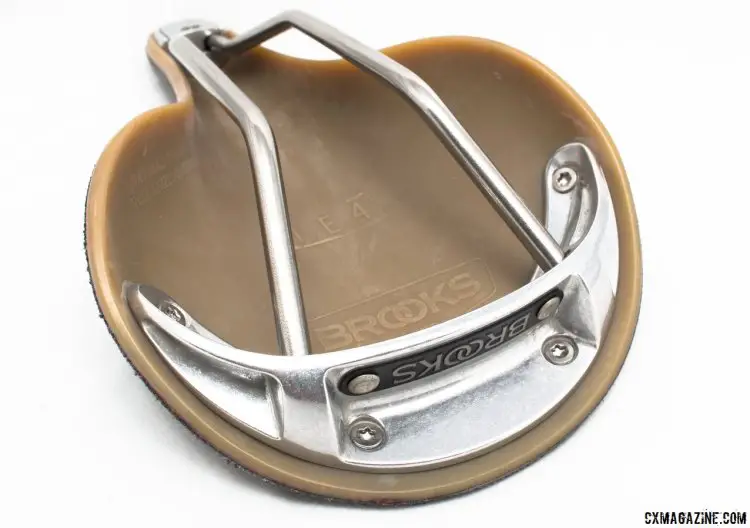
The rubber saddle is mounted to a frame, and easily removable with the right tools. © Cyclocross Magazine
The Cambium is Brooks’s latest iteration in a long line of saddles, and also acts a a large departure. The company, almost synonymous in this day and age with leather, is out to prove that even the oldest dogs are ready to learn new tricks.
The Cambium is essentially three major layers of product: the aluminum base and stainless steel chassis of the saddle’s under body, the vulcanized rubber, which Brooks is quick to point out is handmade in Italy, and finally the organic cotton canvas at the top, which has been claimed to be weather resistant.
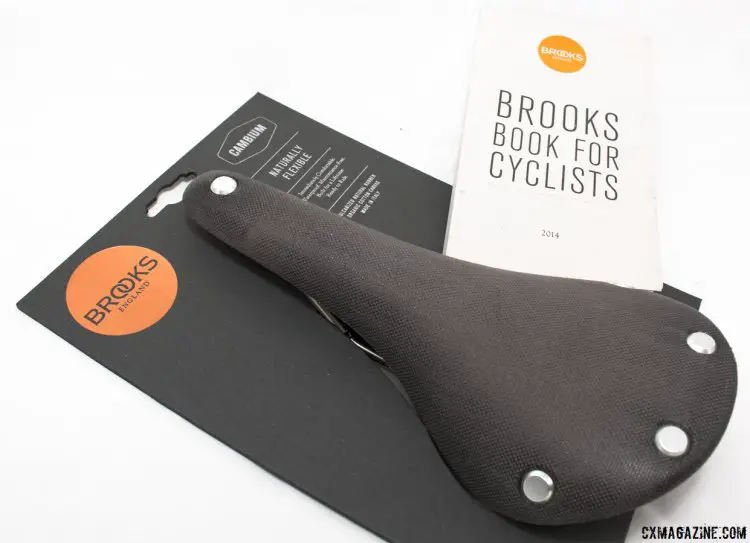
The Brooks Cambium comes with the full package many expect from Brooks: from a display package to a guidebook for cyclists. © Cyclocross Magazine
As with other models, the Cambium is about getting an experience as well as a product. The saddle comes with a personal display case and a Brooks Book for Cyclists, similar to the newspapers, manuals, and product magazines of times past.
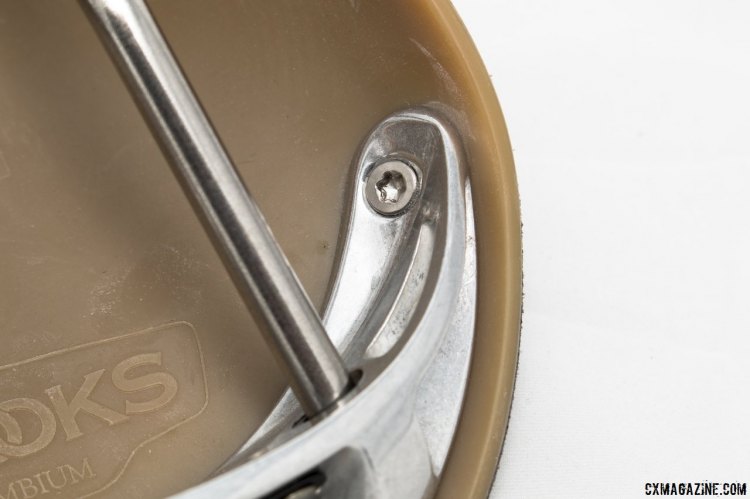
The frame is built from two metals: aluminum for the dual structures and stainless steel for the rails. © Cyclocross Magazine
The gorgeous colors, both Slate and Natural, are usually the first thing that is noticed right out of the box, but a close second is the sheer flexibility of the saddle. A broken-in Brooks has a natural give to it, but this goes even beyond that. It is easy to flex the sides of a Cambium, almost effortlessly, in your hands.
While this could translate into a smooth ride right where an endurance racer needs it, massive flex isn’t the best feature of a high intensity sport. At the very least, remounting would likely take some getting used to.
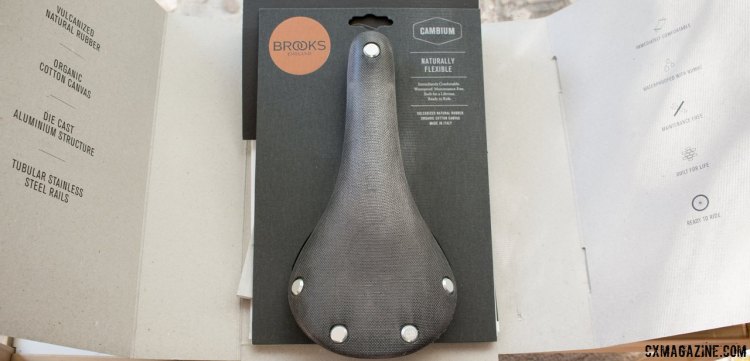
The saddle comes in two colors: Natural and Slate, the latter being shown here. © Cyclocross Magazine
The Cambium appears durable and many of the parts look replaceable even for an untrained mechanic. The saddle’s large drawback is the weight. At 419g, weight weenies are not going to be rushing out to replace their 155g Specialized S-Works Toupe.
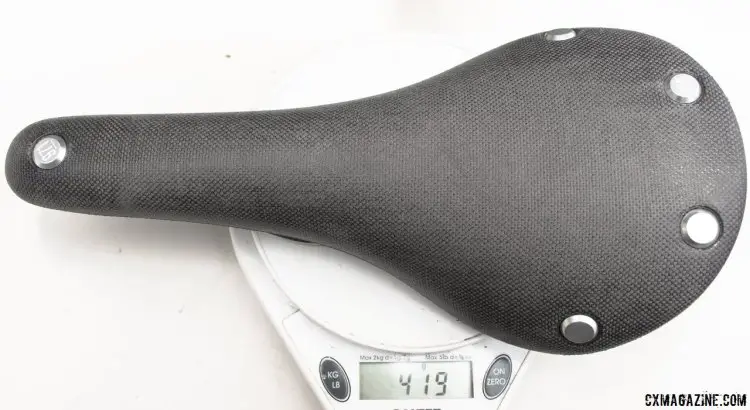
The weight of the Cambium is not for the faint of heart; it sits at a heavy 419g, which is easily double that of high-end performance saddles. © Cyclocross Magazine
Andrea Meneghelli of Brooks took great pride in pointing out the features of the Cambium. When he saw the Cyclocross Magazine in my name tag, he asked me what I thought of using the saddle for the sport. I told him the Cambium had features that would work for long days in the saddle over gravel, but the saddle was too flexible and heavy for the applications of cyclocross.
We talked about using titanium, but the rail material would have to be thickened, not saving a considerable percentage of the weight while dramatically escalating the cost.
The conversation became geared towards removing material from the corners, as well as the composition of the rubber itself to decrease weight while increase stiffness. This conceptual saddle would no longer be the gravel grinding, touring saddle that the Cambium is designed for, but could be an option for cyclocrossers who would like to see Brooks’s renowned quality on the cyclocross course.
“What you just described is something we’ve been considering for a while now,” Meneghelli told me, and the designers behind him gave a knowing smile.
Stay tuned to find out how the renowned durability of a Brooks held up to our remounts.
For more information: brooksengland.com


